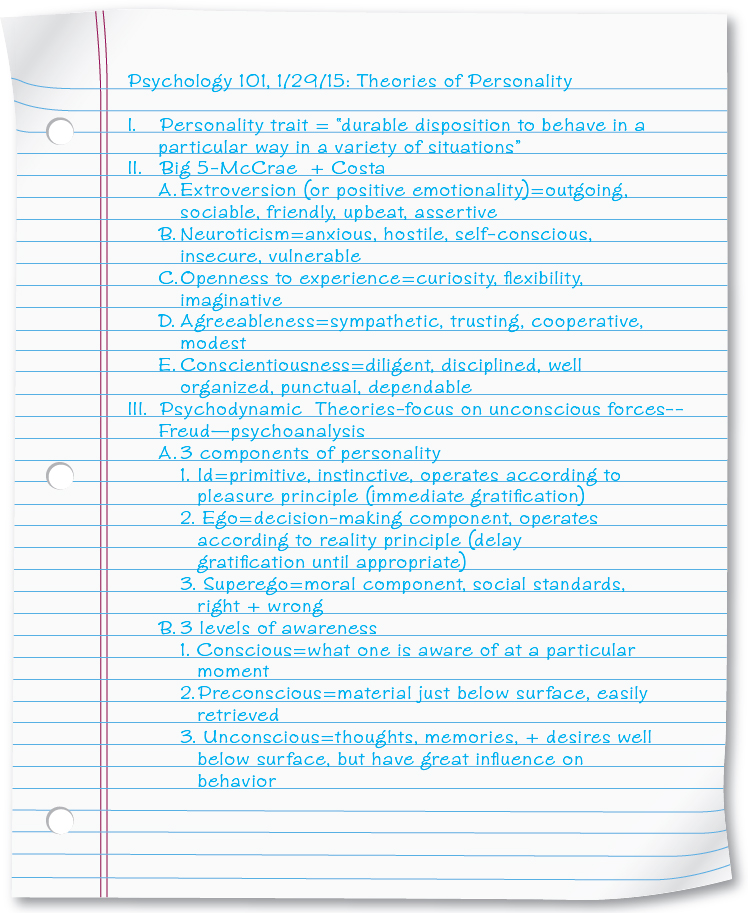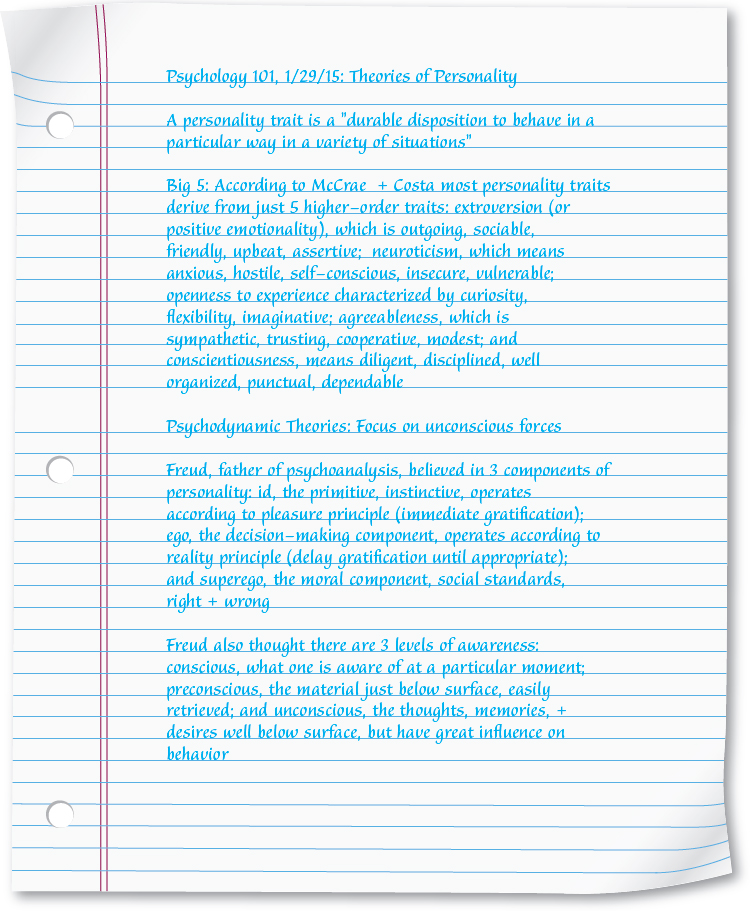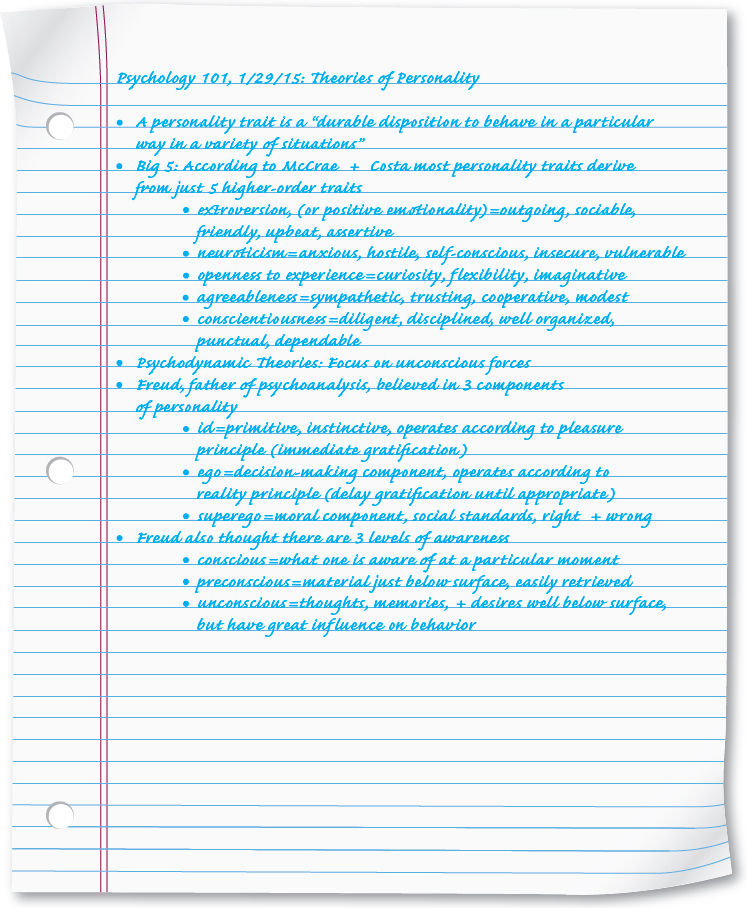Note-Taking Formats
You can make class time more productive by using your listening skills to take effective notes, but first you have to decide on one of the following four commonly used formats: Cornell, outline, paragraph, and list formats. Any format can work as long as you use it consistently.
Cornell Format.Using the Cornell format, one of the best-known methods for organizing notes, you create a “recall” column on each page of your notebook or your Word document by drawing a vertical line about two to three inches from the left border (see Figure 4.1). As you take notes during class—whether writing down or typing ideas, making lists, or using an outline or paragraph format—write only in the wider column on the right; leave the recall column on the left blank. The recall column is the place where you write down or type the main ideas and important details for tests and examinations as you go through your notes, which you should do as soon after class as possible, preferably within an hour or two. Many students have found the recall column to be an important part of note taking, one that becomes an effective study tool for tests and exams.

Outline Format.Some students find that an outline is the best way for them to organize their notes. In a formal outline, Roman numerals (I, II, III, etc.) mark the main ideas. Other ideas relating to each key idea are marked by uppercase letters (A, B, C, etc.), numbers (1, 2, 3, etc.), and lowercase letters (a, b, c, etc.) in descending order of importance or detail. Using the outline format allows you to add details, definitions, examples, applications, and explanations (see Figure 4.2).

YOUR TURN > TRY IT

During the next week, try using the Cornell format in one class and the outline format in another class. Then compare your notes and decide which format helps you the most when you are studying and preparing for tests.
Paragraph Format.When you are taking notes on what you are reading, you might decide to write summary paragraphs—a note-taking format in which you write two or three sentences that sum up a larger section of material (see Figure 4.3). This method might not work well for class notes because it’s difficult to summarize a topic until your instructor has covered it completely. By the end of the lecture, you might have forgotten critical information.

List Format.The list format can be effective in taking notes on terms and definitions, facts, or sequences such as personality types. It is easy to use lists in combination with the Cornell format, with key terms on the left and their definitions and explanations on the right (see Figure 4.4).

YOUR TURN > ON YOUR OWN

Using the list format, review this chapter and list the key ideas in your class notebook or on a digital device. Add definitions, examples, and other explanations related to each key idea.